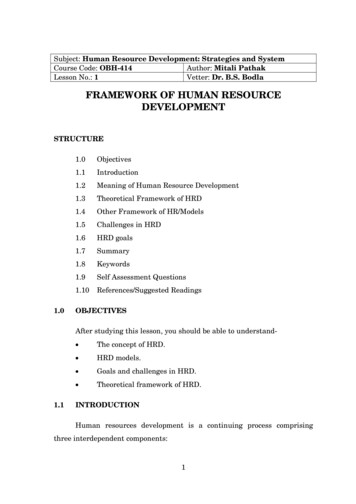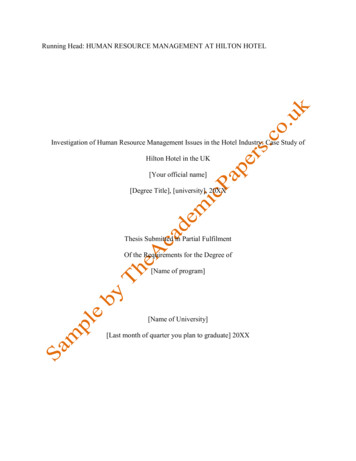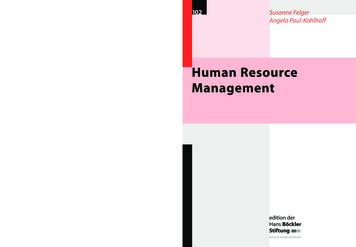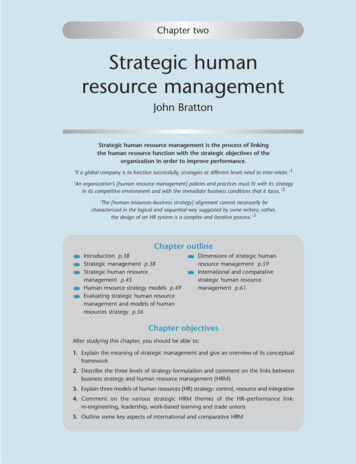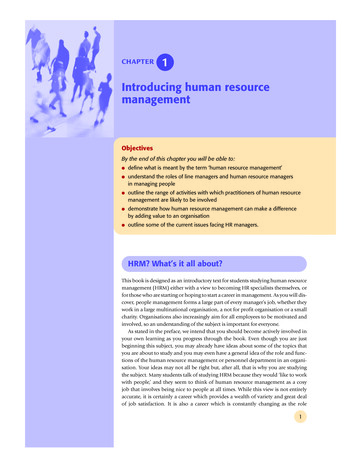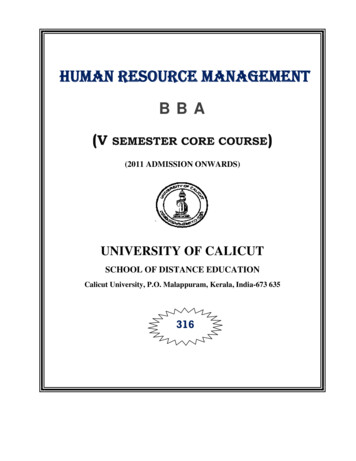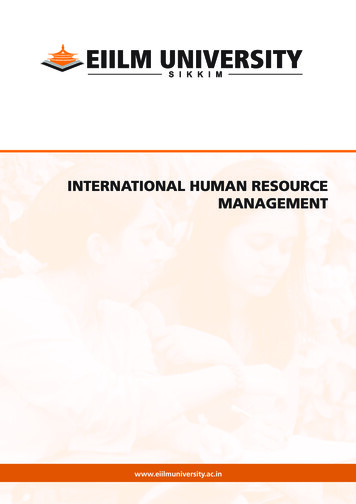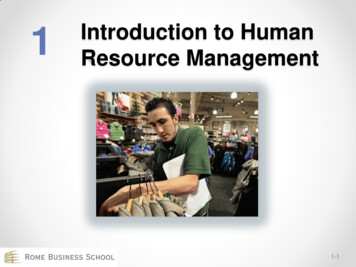
Transcription
1Introduction to HumanResource Management1-1
Learning Objectives1. Explain what human resourcemanagement is and how it relates to themanagement process.2. Show with examples why humanresource management is important to allmanagers.3. Illustrate the human resourcesresponsibilities of line and staff (HR)managers.1-2
Learning Objectives4.Briefly discuss and illustrate each of theimportant trends influencing humanresource management.5.List and briefly describe important traitsof today’s human resource managers.6.Define and give an example of evidencebased human resource management.7.Outline the plan of this book.Copyright 2013 Pearson Education1-3
Explaining what humanresource (HR) managementis and how it relates to themanagement process.1-4
What is human resource (HR)management and whyis it important?1-5
The Management Process PlanningOrganizingStaffingLeadingControlling1-6
Review Part of total management process Focus on staffing processeso Job analyseso Recruitingo Compensationo Performanceo Compliance issues, etc.1-7
Human Resource (HR)Responsibilities of Lineand Staff Managers1-8
Line and Staff Managers Line authoritygives you the rightto issue orders Staff authoritygives you the rightto advise others inthe organization1-9
Human Resource DutiesLine Managers Job placementOrientation & TrainingPerformanceCooperationLabor costsDevelopment1-10
Human Resource DutiesStaff Managers Line function inside ofHR department Coordination Assist and adviseSample HR organizational chart for a smallcompany1-11
Review Profits and performance HR is a line function within HRdepartment HR is a staff function to support linemanagement Right person, right job1-12
Important Trends in HumanResource Management1-13
Trends in Human ResourceManagement GlobalizationCompetitionDeregulationIncreased indebtednessTechnological innovationMore high-tech & service jobs1-14
Trends in Human ResourceManagement More knowledge workAging workforceEconomic downturnDe-leveragingDeregulation slowdownSlower economic growth1-15
Globalization Firms extend sales, ownership andmanufacturing to other countries Sales expansion Lower labor costs Forming partnerships Offshoring1-16
Indebtedness andDeregulation Stock brokering by banksLending practicesNo money downSpending IncomeBalance of paymentsTreasury bonds1-17
Technological Trends Smart phonesTablet computersFacebookJob seeking1-18
Trends in the Nature ofWork High-tech jobs Service jobs Knowledge workand humancapital1-19
Workforce andDemographic Trends1-20
Demographic Trends1-21
“Generation Y” Workers Considered to be high-performanceand high-maintenance Fair and direct supervisors Creative challenges Day 1 impact Small goals Faster and better workers1-22
Retirees, NontraditionalWorkers, Workers from Abroad Bringing retirees backMultiple jobsContingent workersAlternative work arrangementsWorkers from abroad1-23
Economic Challenges andTrends GNP growth boom 2001 – 2008Falling off a cliffDebt accumulationWorthless loansEconomy tanks1-24
Evidence-basedHumanResource Management1-25
Review GlobalizationIndebtedness and deregulationTechnologyTrends in the nature of workEconomic challenges and trends1-26
TheNew Human ResourceManagers1-27
based practiceTransactionalServicesThe nagementEthics1-28
Review Talent managementEthicsEmployee engagementMeasurementEvidence-based managementValueNew competencies1-29
1. Explain what human resource management is and how it relates to the management process. 2. Show with examples why human resource management is important to all managers. 3. Illustrate the human resources


